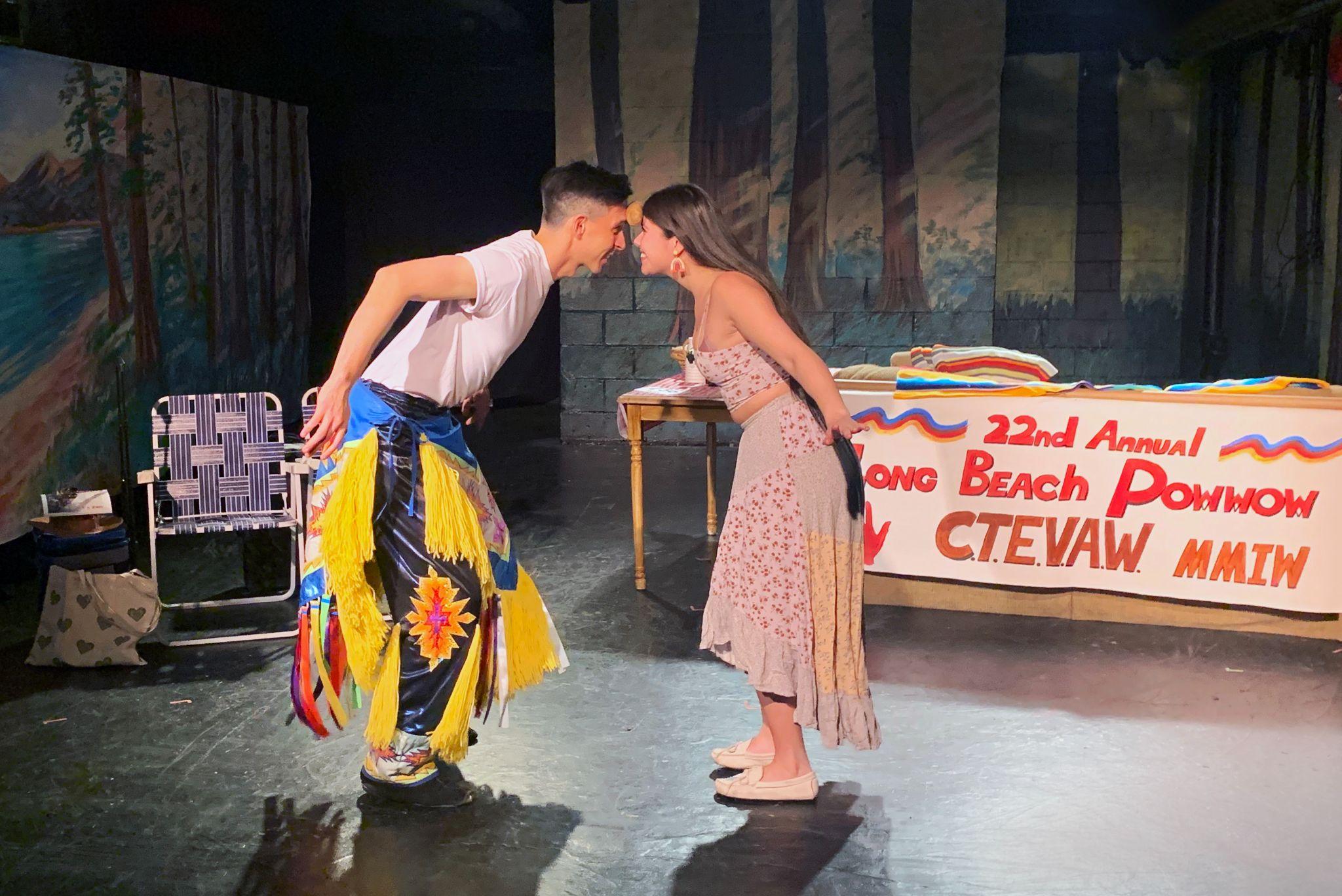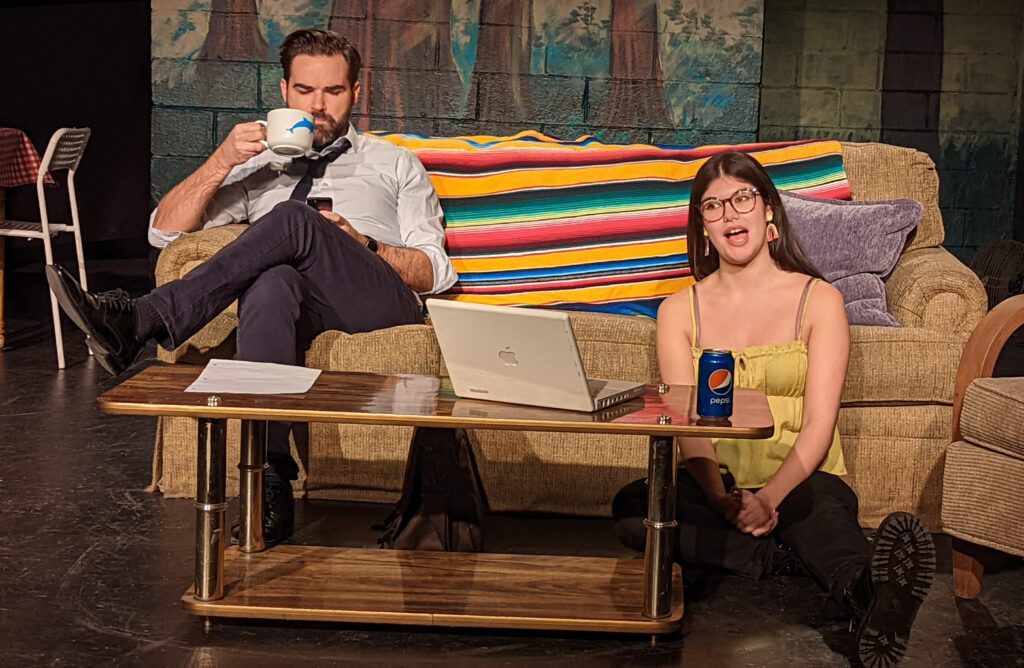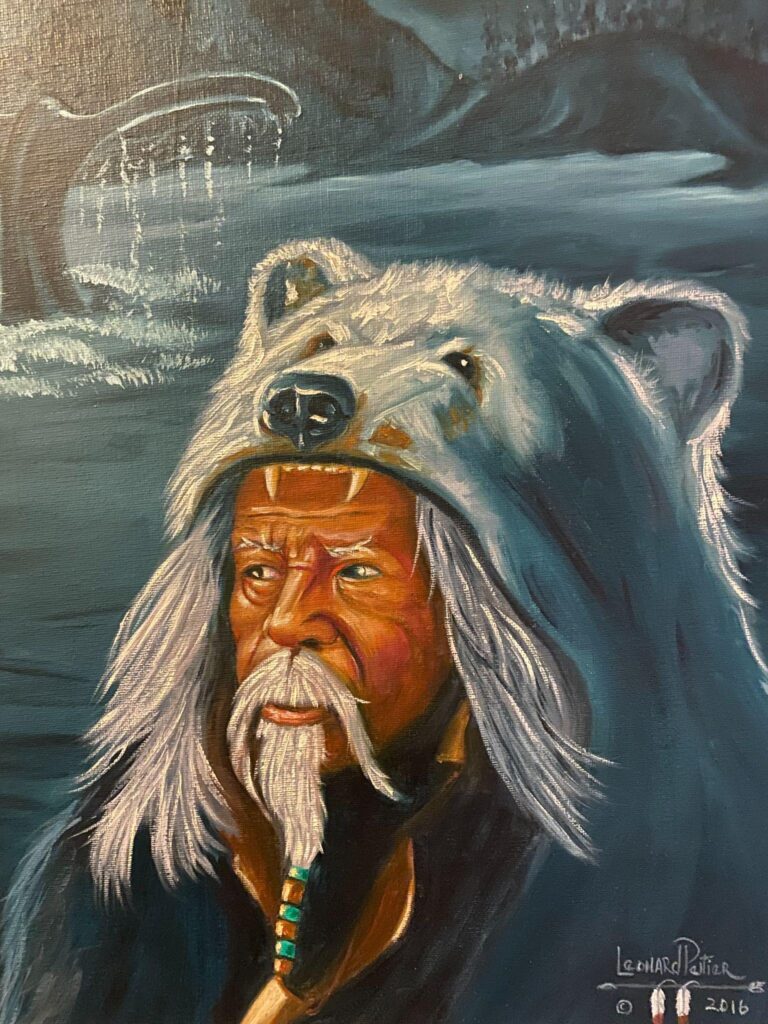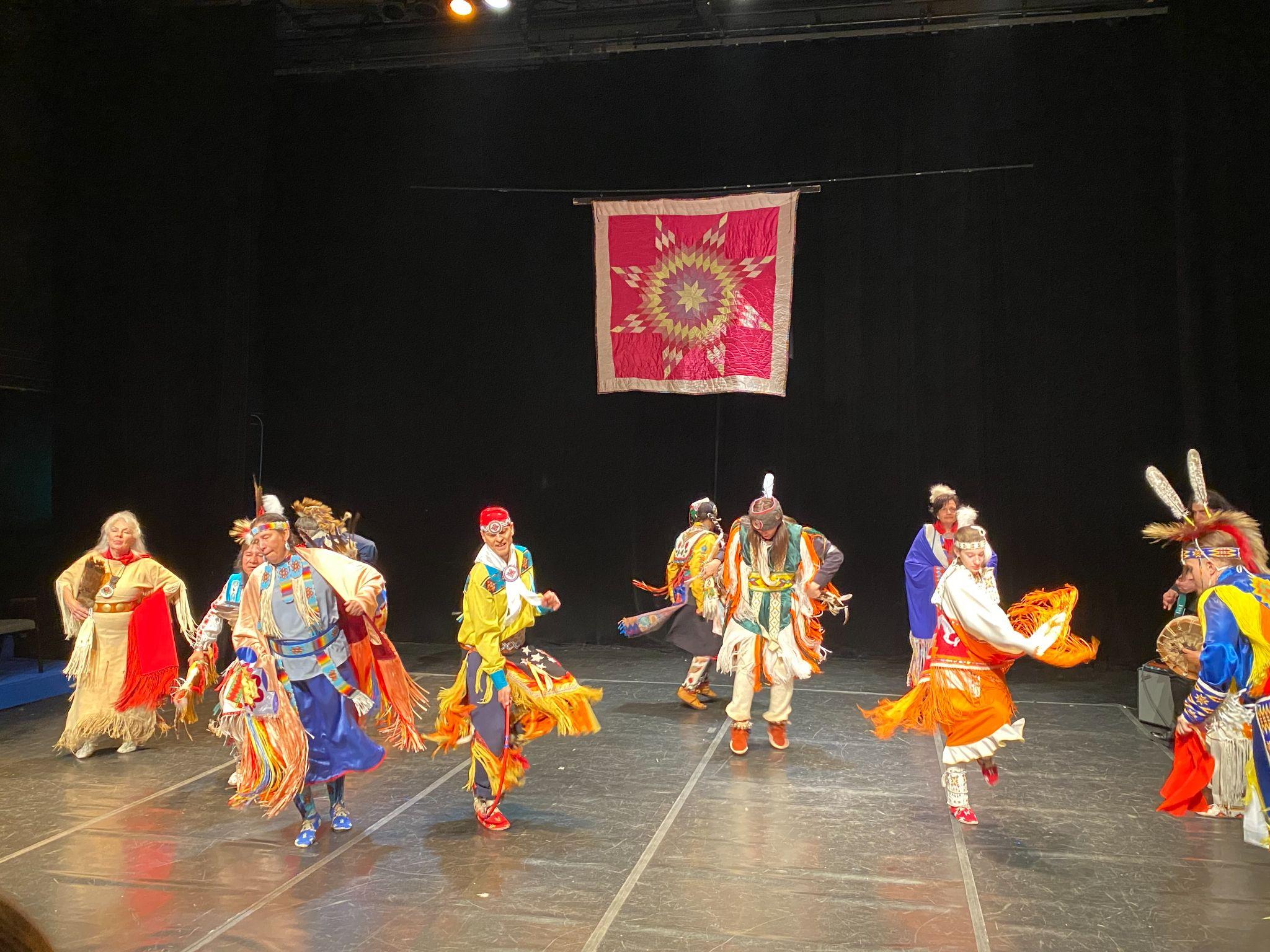Native American Art and Culture Rise Up


Hope is in the air for Native Americans. Close to my heart, the case of the Native American activist Leonard Peltier—incarcerated for 47 years on trumped up charges—has been broadcasted on significant channels like C-SPAN, namely the segment “Inside the American Indian Movement” detailing his case and an article on the seven senators who are asking Biden for clemency in The Huffington Post.
To further advocate for Native American people the conversation must be inclusive. On January 21st in a CNN debate on the lack of teaching about Black and Brown history in schools in Florida they did not mention Native American history. I say: Black, Brown, Asian and Native American (Red!) Furthermore, racism against indigenous people is still pervasive in certain parts of this country. On Twitter, former Representative of North Dakota Ruth Anna Buffalo pointed to the need of a hate crime law when Native American students were chastised at a game between high schools. A reminder that these problems are not new, she wrote: “Heartbreaking as a parent. You never want your kids to go through what you did. Sadly, racism is alive and well in Jamestown, North Dakota and beyond. Not surprised at all. All the more reason for a hate crime law. It starts in the home. Exhibit A-Jamestown.”
We must legislate, budget, and advocate for Native people to be treated with dignity and the highest humanity as fast as possible for them not only to survive but also feel respected and to thrive.

The play “Soledad” written by Carolyn M. Dunn and directed by artist John Scott-Richardson centers on an intergenerational story of marginalization. But is also a play packed with knowledge about the traditions, culture, and history and reveals very painful events within the family circle and outside of it. Right in front of our eyes, a painfully charged story is unveiled between a father and his daughter. Sometimes they live in the present, and sometimes in the past. That skillful and very creative directing by John Richardson keeps the audience on the edge searching for answers with the very few clues he reveals along the way. Like crumbs on a path we need to collect and then comes the AHA moment we get it. With it comes also the knowledge of the bitterness over the treatment of the Native American people and especially women. Two generations are clashing not just because they think differently but mainly stems of worrying and caring for each other’s well-being.
This very special story of love and pain was performed in a small room at the Theater for the New City, in New York City. It deserves a bigger stage for larger audiences. Diane Fraher, AMERINDA’s Founder and director writes in the introductory brochure “As Native people, our own traditional values and lifeways sustain us and heal us. Our lives are filled with ceremony and art interchangeably. We hear a song of hope and use our bodies to pray and dance ourselves to recovery.”
In his artist director’s statement John Scott-Richardson, who is also an incredible Native musician, admits that he was at first a bit apprehensive directing the play, but then the magic happened “I read the script and fell in love with the power of transformation and remembering how strong our ancestral connections truly are. Immediately, I felt this story could be the story of a lot of Indigenous people of today and I felt compelled to bring it to life.” Indeed he brought it to life and the audience in a standing ovation into tears with mixed emotions.
Celebrating the Native American culture from another angle is the acclaimed Native American Dr. Robin Wall Kimmerer, plant ecologist who in collaboration with tribal partners, she and her students have an active research program in the ecology and restoration of plants of cultural significance to Native people. A fascinating interview with her by Krista Tippett on the ON BEING podcast is educational and entertaining.
Marking the first Native American artist to have a retrospective at the Whitney Museum of American Art, the museum will open a retrospective of Jaune Quick-To-See Smith in April. She is a citizen of the Confederated Salish and Kootenai Nation. The Whitney describes the exhibition as “an overdue but timely look at the work of a groundbreaking artist.”
Time is now for advocacy because in the past it was not tolerated and some who have paved the way are living proof. For example, the Native American activist Leonard Peltier is currently wrongfully incarcerated. February 6th started the 48th year, at the age of 78 and deteriorating health. His life was stolen at the age of nine when he was sent to a government boarding school. His story is heart-wrenching. In his twenties he was an important leader who organized for the rights of his people the Ojibwa-Lakota Tribe. At the time the government was pushing back on Natives who organized for their civil rights. He was convicted in 1976 for the killing of two Federal Bureau of Investigation (FBI) agents. Since no evidence was found his charge changed to Aiding and Abetting. Peltier’s story, along with that of four other members of the American Indian Movement is told by Sheron Wyant-Leonard in her book “I Will.” I highly recommend it for those who want to dig deeper.
Peltier is currently in a high-security prison in spite of the fact that it is clear he did not commit a crime and he continues to maintain his innocence. The fact that a political activist who fought for civil liberties for Native Americans remains imprisoned in the United States today is outrageous. The way he has been treated is both inhumane and unjust. “The only thing I’m guilty of is helping my people,” Peltier has said.

While in prison Peltier has developed his artistic practice. Together with my non-profit CITYarts I recently edited and published a retrospective book of 126 of his paintings that showcase his vivid imagination and the deep love he has for his people and humanity as a whole. In addition to his art, there is a chapter on the call to action to #FreeLeonardPeltier. Through CITYarts I develop community projects engaging youth and artists to inspire and promote peace. I hope that honoring Peltier will do the same.
Many are rallying to free Peltier including Coleen Rowley a retired FBI agent in a recent interview with Native American author Nick Estes of RED NATION. In a letter to President Biden, Rowley pointed to the many inaccuracies of his case and that there is no justification for him to still be imprisoned. Rowley stated that Peltier is in prison due to an “FBI family vendetta.” Even James Reynolds, Peltier’s former prosecutor, has gone back on his claims and has sent a letter to President Biden requesting Peltier’s immediate release. Reynolds states in the letter, “We were not able to prove that Mr. Peltier personally committed any offense on the Pine Ridge Reservation.” Many important individuals like Pope Francis, Nelson Mandela, the Dalai Lama, Mother Theresa, and Coretta Scott King as well as celebrities like Ringo Starr, Willie Nelson, Robert Redford, Wes Studi, and Danny DeVito have appealed to US Presidents to grant Peltier clemency.
 Former Federal District Court Chief Judge Kevin H. Sharp, Peltier’s attorney, has many times called the prosecution an unconditional obstruction of justice. He has worked on the case pro-bono for over three years and has requested clemency from President Biden. He hopes that the recent interview with the FBI agent will shake the system and bring this obscene injustice to light leading to Peltier’s release.
Former Federal District Court Chief Judge Kevin H. Sharp, Peltier’s attorney, has many times called the prosecution an unconditional obstruction of justice. He has worked on the case pro-bono for over three years and has requested clemency from President Biden. He hopes that the recent interview with the FBI agent will shake the system and bring this obscene injustice to light leading to Peltier’s release.
Hopefully, President Biden will realize that Leonard Peltier is an asset to America. His leadership continues from prison as he encourages everyone to plant a tree, “so we can have a healthier planet for our children.” By freeing him President Biden will start the very necessary long overdue healing with the Native American people, an action that will free the American people too.

I wish Leonard Peltier could have accompanied me to this sweeping colorful performance by the Thunderbird Indian American dancers. Thirty men and women from different tribes performed at Theater for the New City in New York City. They got the audience on their feet! This amazing company found are constantly on the road as they perform worldwide. Members come from various tribal backgrounds and during the performance presented dances from multiple cultural areas of North America. Before each dance, an elder Narrator Louis Mofsie gave a very beautiful and simple explanation of what the audience was about to see and why each dance was created, and for which occasion.
It gave him and us an opportunity to pick into the American Indian traditions as they were created through their lives. For example “the grass dance” was created to prepare certain tribes to move from one place to another as they followed the hunting of the Buffalo. Every part of the Buffalo was used for their essential needs. The skin for clothes and Teepees, the bonds to make cutlery, and so on. To prepare for the move they sent a group of people to find a piece of land close to where Buffalos passed. They’d dance for days to flatten the tall grass to ready it for their Teepees. That’s where the name “Grass dance” came from. Not just performing but offering free classes and PowWow events the Thunderbird dancers are dancing to sustain their communities, like their itinerant ancestors and I am grateful to be able to witness and share in their culture.
“Hope is the thing with feathers
That perches in the soul,
And sings the tune without the words,
and never stops at all…”
Emily Dickinson
You Might Also Like
Artists Discuss Sustainability and Eco-Activism at MOCA Los Angeles
Quilted Portraits that Evoke the Racialized and Gendered History of Craft
What's Your Reaction?
Tsipi Ben-Haim is the founder of CITYarts, a non-profit public arts and education organization that engages youth with professional artists to create public art. l website l

